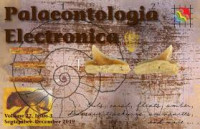The alternation of cold and mild phases during the Late Paleozoic Ice Age (LPIA; 372 – 254 million years ago) led to changes in the composition of animal life. We analyze how the diversity of lamp shells (brachiopods), snails (gastropods), and bivalves (clams, scallops, mussels, etc.) changes throughout the LPIA. In general, brachiopods were more diverse than gastropods and bivalves, but the rates of extinction and origination are similar in all three groups. With regard to environmental factors, most taxa favored deeper marine and reefal settings. Siliciclastic sediments were favored, while grain size of the sea floor sediments was less important. Origination and extinction patterns are similar in different environments and when all environments are grouped together. Our results support that the fauna was well adapted to changes throughout the LPIA. Sea-surface temperature was not the main force driving changes in faunal composition. Since the patterns of faunal change are similar in different environments, we conclude that the habitat was of minor influence. >> PaleoElectronica Article

